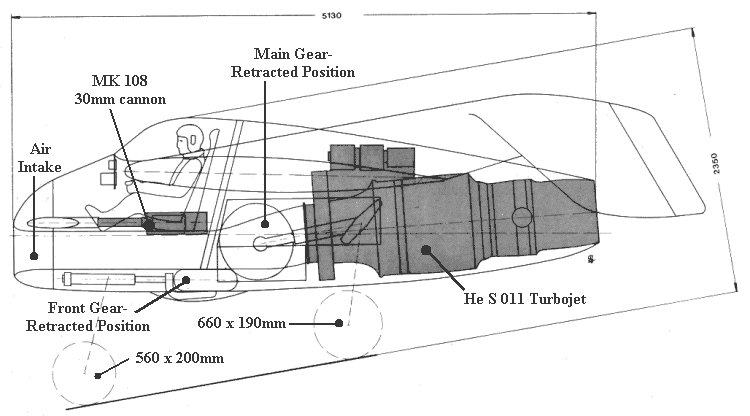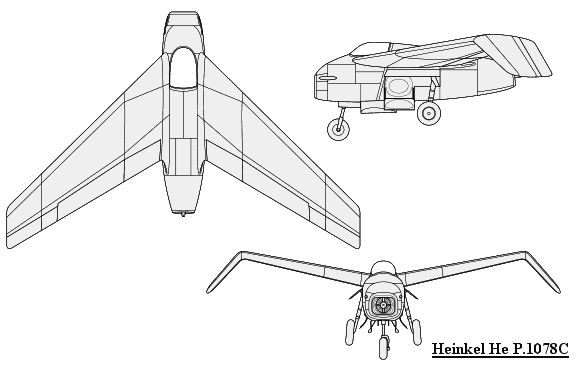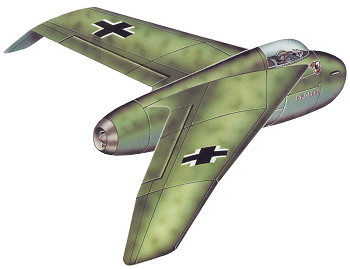
 This design was submitted to the Jägernotprogram
(Emergency Fighter Program) at the end of 1944. The Messerschmitt
Me 262 twin jet fighter was beginning to enter combat, but a second generation
of jet fighters were wanted, one that would take advantage of the (soon
to be produced) Heinkel Hirth He S 011 turbojet engine. Specifications were
issued by the OKL (Luftwaffe High Command), and Heinkel entered their He
P.1078C fighter design in the competition for a development or production
contract.
This design was submitted to the Jägernotprogram
(Emergency Fighter Program) at the end of 1944. The Messerschmitt
Me 262 twin jet fighter was beginning to enter combat, but a second generation
of jet fighters were wanted, one that would take advantage of the (soon
to be produced) Heinkel Hirth He S 011 turbojet engine. Specifications were
issued by the OKL (Luftwaffe High Command), and Heinkel entered their He
P.1078C fighter design in the competition for a development or production
contract.| Span | Length | Fuselage Length |
Height | Track Width |
Wing Area | Total Area |
| 9.0 m 29' 6" |
6.1 m 20' 0" |
5.13 m 16' 10" |
2.35 m 7' 8" |
1.8 m 5' 11" |
17.8 m² 191.6 ft² |
51.3 m² 522.2 ft² |
| Empty | Equipped | Takeoff | Landing | Wing Loading |
| 2454 kg 5410 lbs |
1466 kg 3232 lbs |
3920 kg 8641 lbs |
3120 kg 6878 lbs |
220 kg/m² 45 lbs/ft² |
| Max. Speed | Rate of Climb | Takeoff Distance | Landing Distance |
Landing Speed | |||||||||
|
|
700 m 2296' |
640 m 3000' |
182 km/h 113 mph |
| Manufacturer | Scale | Material | Notes |
| Airmodel AM-2058 | 1/72 | Resin | nicely casted |
| Merlin #70 | 1/72 | Injected, white metal & decals | raised panel lines, not too bad a kit |


Above Images:
Side view drawing: Courtesy Hanns von Rolbeck
Color image: Luftwaffe Secret Projects: Fighters 1935-1945